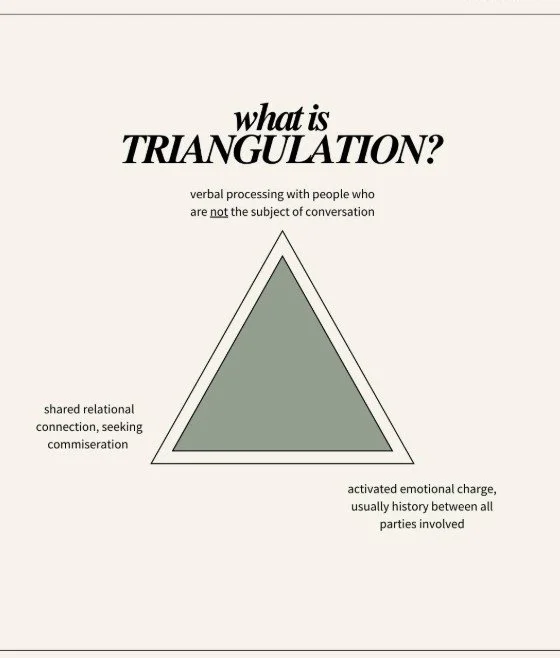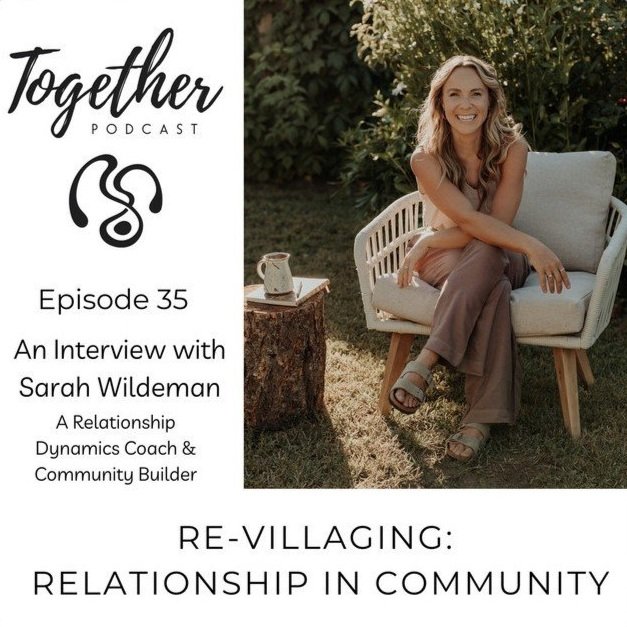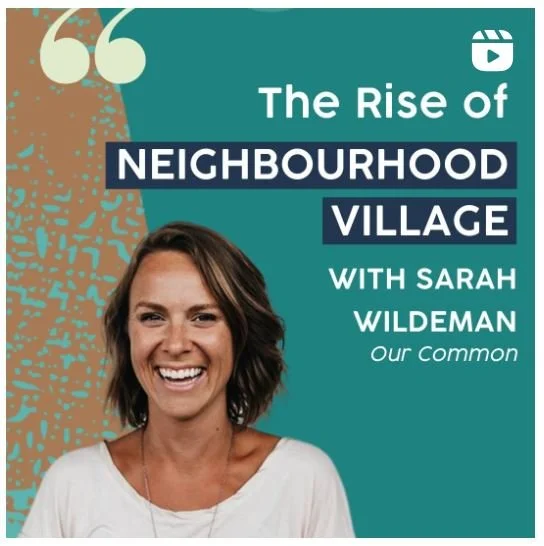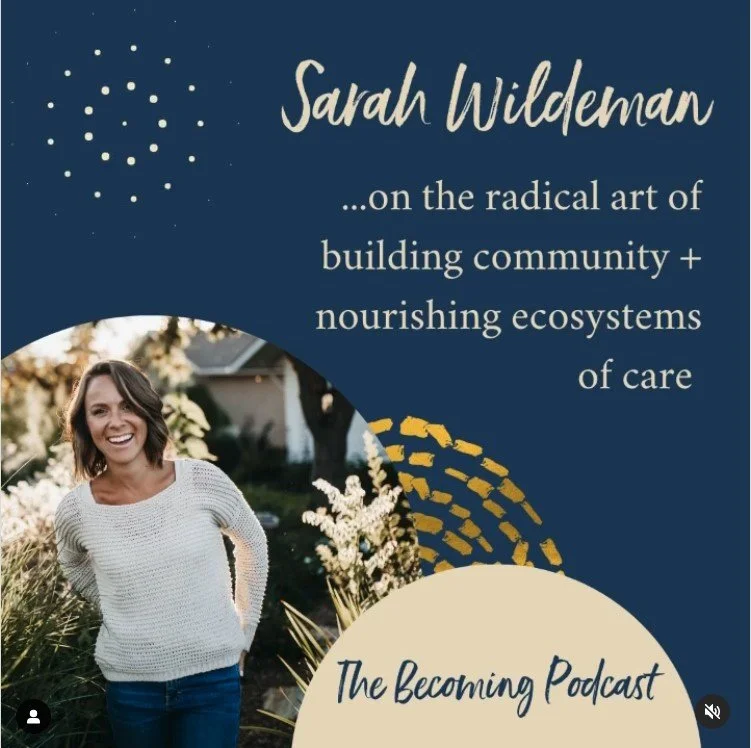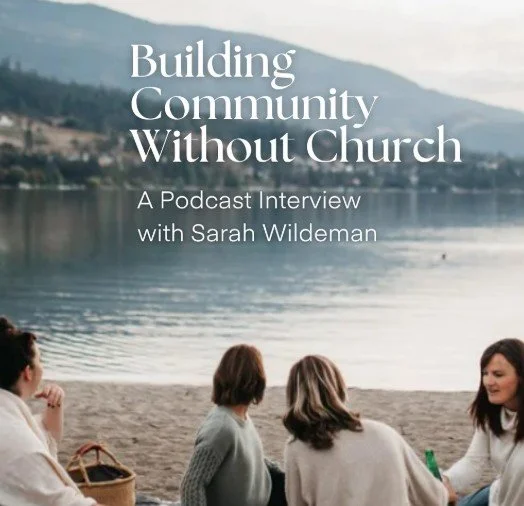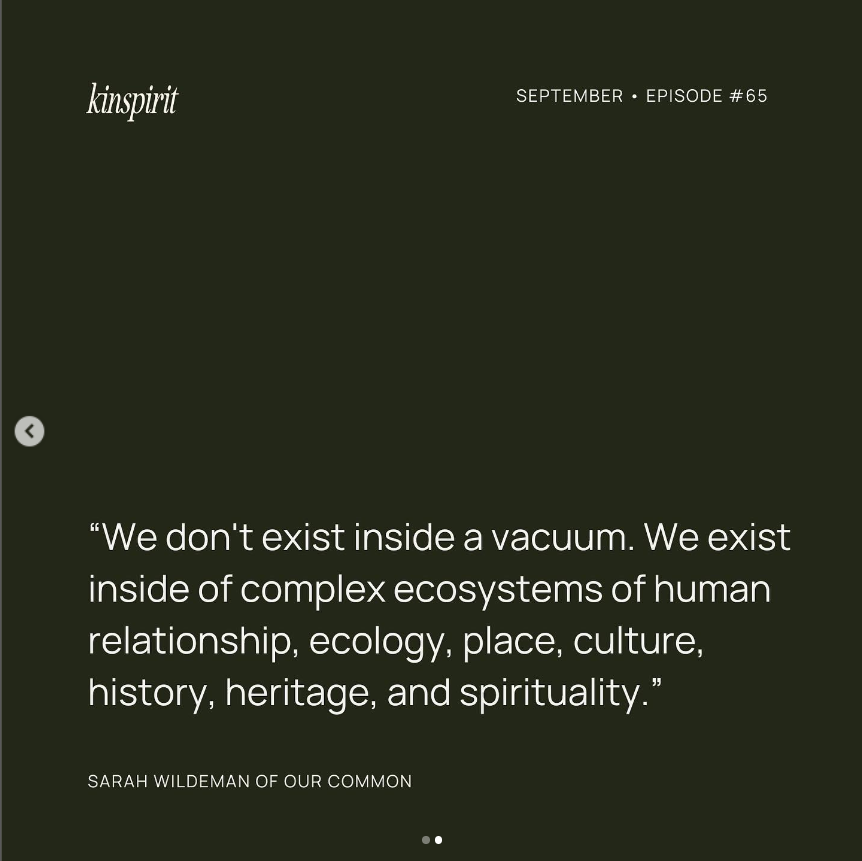
OUR COMMON LIFE
Resources
On this page you will find extra resources to support your community building journey.
Resources on this page include the following:
Book, podcast, article, and website recommendations from past program participants.
Reflections & journal prompts on various topics and themes.
Bonus homework and suggested practices for those that need that extra challenge and nudge to take action.
We’ll keep adding to this page throughout our time together.
If you have a resource you recommend, like a book, podcast episode, article, website etc. please drop it into our WhatsApp thread and we’ll add it to this page for all to access!
Table of Contents
Links and External Resources:
>> Information about Cohohousing in North America
>> Resources for those interested in Intentional Living Communities
>> Book Recommendations from Past Participants
>> Podcast interviews featuring Sarah
Reflection, Journal Prompts, and Suggested Practices from Sarah:
>> On remembering & sourcing inspiration
>> On visioning
>> On values & priorities
>> On mapping your relationship ecosystems
>> On initiating & inviting
>> On building with sustainability in mind
>> On starting right where you are
>> On addressing our questions & fears
>> On balancing needs in community
>> On triangulation
>> On conflict - coming soon
>> On shared decision making - coming soon
>> On belonging & worth - coming soon
If you’re interested in cohousing…
Note that all the information found in this section comes from the Canadian Cohousing site.
Cohousing is a type of collaborative housing that attempts to overcome the alienation of modern housing, where there is little sense of community and few people know their neighbours.
Cohousing communities incorporate the following main features:
-
The future residents are integral to the planning, design and development of the community, so that it directly responds to their needs.
-
Cohousing combines the autonomy of compact self contained private dwellings with the benefits of shared, spacious community amenities that typically include a large dining room, kitchen, recreation spaces, meeting rooms, children’s play spaces, guest rooms, workshops and gardens. Although many multi-family developments include some amenity spaces, in cohousing the extensive common spaces not only make it possible to live in a smaller home, they also function as the heart of the community and offer many opportunities for social interaction. Although each home has its own private kitchen, shared meals are one of the many regular events that support relationships among neighbours.
-
The physical design provides opportunities for spontaneous connection as well as maintaining the option for privacy. This can be achieved with a variety of building forms. Completed communities vary in size, but typically range from 20 to 30 homes. Some have a special focus (e.g., for seniors) but most are intergenerational with a mix of family types and ages. Building forms mirror the range found in the larger society: single-family, townhouses, duplexes and apartments. Cohousing neighbourhoods typically incorporate environmentally sensitive design with a pedestrian orientation and have documented lower vehicle use than conventional neighbourhoods.
-
Community decision making is non-hierarchical and usually by consensus, however this does not impact the ownership form. Cohousing is not a particular legal form or means of holding interest in real property. The legal ownership form generally chosen for the completed community is the strata/condominium, however some communities have chosen to use the co-op/share structure. Regardless of the legal structure chosen, the community is ultimately bound by the rules and laws set out by the provincial acts governing stratas/condominiums or co-ops/share structures.
The development process does not of itself generate below market priced homes. Although that process does not include profit if the resident group is the developer, the homes are often of higher quality with more green-built features then conventional housing. This makes them less costly to maintain and operate, but does contribute to higher construction costs.
An aspect not often considered when looking at affordability is the cost of living. Because of the social structure and easy access to shared resources, cohousing homes provide opportunities for reducing living costs that are not available in conventional neighbourhoods. The homes can be smaller without negatively impacting lifestyle and the sharing reduces consumption. As a result, cohousing contributes to the affordable housing continuum.
-
If you're looking for more links and resources on cohousing:
Here is the link to the Canadian cohousing site - there is a list here of Canadian cohousing initiatives as well as resources etc:
https://cohousing.ca/communities/
Here is the link to US cohousing site - it also includes a directory of UC cohousing initiatives and huge well of resources; https://www.cohousing.org/
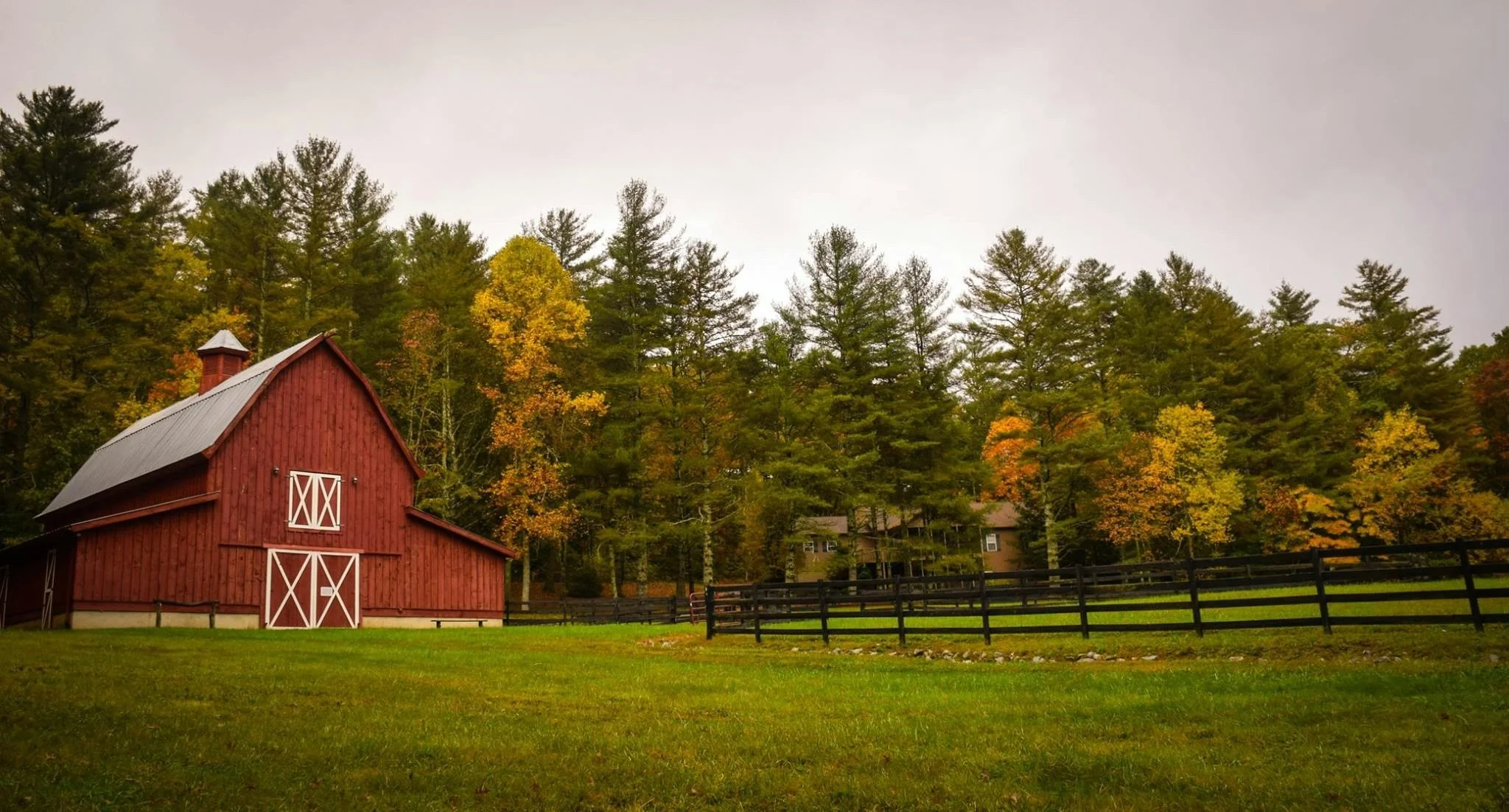
For those that dream of buying land with a bunch of friends and starting an intentional living community or ecovillage…
There are lots of resources and links I could share but the best I've found by far is The Foundation for Intentional community (FIC).
They have a whole bank of resources including a podcast, a network of existing and developing intentional communities, and courses to support you in building your own. They are a non-profit that seeks to support the growth of Intentional Communities around the world. They actually also have their own resource library with a list of books!
I discovered them after I first initiated this course - but often feel gratitude for the work they are doing - because much of it was work I once envisioned doing myself, and I am glad to have found and connected with a broader network of people holding vision for a more connected world!
Do check out their site and feel free to drop favourite finds from their huge collection of resources into our shared Whatsapp chat.
Book Recommendations from Past Participants
Relationship Ecosystem Mapping tool
I created this Relationship Ecosystem Mapping tool (also can be thought of like a Relationship Inventory) to help you take a whole-picture look at the various needs and longings in your life, and to take stock of where different relationships are tending to those needs (and where they aren't). This exercise is primarily an information gathering exercise.
The link will open like a webpage - if you want to use the fillable version - you can set up a free Notion account and then copy this tool into your own account and edit it right in there!
If that's not your thing, you can grab the pdf version to print or use as a prompt.

On Values & Priorities…
Your values are those things that inherently matter most to you. Let’s take an honest look at your values and explore what you want to be radically prioritizing in your life.
-
I love to start my values reflection with a big word-cloud or brainstorm page where I capture lots of values words.
Here are some places to look:
Places of joy/ease/alignment/vision (this is where your values are being honoured/expressed)
Places of frustration/conflict/disappointment (this is where your values are being suppressed or grated against) - see if you can invert these to name the value hidden inside the experience.
Things you prioritize and orient around
Things you think or talk about a lot
Your recent vision story - re-read through what you wrote or journaled about or shared - what key elements are present in this story?
If you already have an existing list of values you orient around - take time to read through them again!
-
Start looking for themes, or grouping words together, or noticing if particular words jump out at you with more emotional charge than others.
Here's a a few Journal prompts to deepen your exploration:
If my house was on fire and my values were on the shelf, and I could only grab 4 values to save that I couldn’t live without, I would grab…
When I look at my list of values I feel…
When I start talking about priorities I feel…
What’s most important to me is…
-
Look through your values list, and do some honest inventory of which ones your life honours and expresses, and which ones it doesn’t.
One way to do this is to make a “values pie” - draw a circle on your page and divide it into wedges - label each wedge as one of your values - evaluate on a scale of 1-10 how well that value is being honoured/expressed in your life right now (where 10 is fully, and 0 is not at all) - shade in the wedge up to the appropriate amount (for example: if you said “5” on one value, shade that wedge in half-way). Put a date on it - it’s a snapshot in time.
Take a look at your overall “values pie” and notice whatever you notice.
This can be a great springboard to start identifying changes you want to make or places you want to be investing more intentionally in your life. -
Sometimes we have values that are in conflict with each other in a given season. As you look at your visions and goals, alongside your values can you identify at least one value that you want to radically prioritize this week/month - map out what that might look like and make some changes to your schedule/commitments accordingly.
On remembering & sourcing inspiration
I wanted us to start this program with remembering ‘the village’, rather than just talking about it abstractly, because the process of accessing our memories reminds us, that on some level (no matter how small or how ancient) that:
WE KNOW HOW TO DO THIS!
-
Let’s remember together… You might return to this practice again and again:
Pause, close your eyes, and take a deep breath…
Allow your imagination to take you to a time where you felt held and secure in a community or village context.
You may find yourself in conscious memory from your own life, or somewhere that feels more explorative and imaginative from some time in history. Trust it and allow the details of your memory to come to life.
Write out what came to mind - feel free to capture details, stories, words, feelings, images, sensations, colours, smells etc.
Repeat as many times as you like or let your journaling flow to reveal more memories.
Read back through them, looking for the elements or themes that were present in these community experiences.
What felt most important to remember?
-
Chances are this process will activate some element of grief…
A community or people now lost - an absence of the kind of community you’ve longed for…
A heartbreak for the world as you wonder at the seemingly rarity of these moments…
Trust yourself to allow the grief, and feel free to reach out to our group space if you want someone to witness it with you.
-
The beginning of this course always gets me really reflecting on moments from my childhood, and adult life, that evoke those visceral sensations of meaningful connection, of reciprocal care, and of shared life.
I really believe, that we all have these memories - though for some of us they may seem less overt or obvious - in your bones you know what it means to live in interdependence with others - it is the history of the survival of the human race!
Here are a few snapshots, from some of the memories that rise to the surface for me:
I’m 4, and 10, and 12… it’s Thanksgiving, or Easter, or even Christmas… the table is packed with diverse faces from different cultures and backgrounds… my parents volunteer with a local international student sponsorship program connected to the university, and every holiday includes near strangers at the table… my Dad is talking about the food… people are laughing and sharing stories from their home-countries… I’m eager to be in the conversation: sharing stories from my week, or about a particular interest at the time. I feel grown up, curious, and proud.
I’m 23 and newly married… and craving quality time with girlfriends - I make a list and call the women, and share ‘my vision’ of a regular circling time where we would share our hearts together with no holding back. Everyone says yes, and for 2 years we meet every week in my home - we weep and laugh our faces off. We all feel so naked, and seen, and beloved.
I’m 27 and freshly born a mother… we live very remotely in the Rocky mountains, in community, and my every meal is cooked by a blessed someone else. I don’t know who I am anymore, and everything about my reality and identity has been turned upside down. Yet when it comes to the details, I am being carried every step of the way by my village - my baby is passed from arm to arm, and is entertained at meal-times, and I collapse daily onto my next door neighbour’s sofa to be served tea, and to cry, and to discuss the wildness of life. I feel raw, and new, and whole, and lost, and carried.
I am 30 and we now live on the coast on a farm with other families… with shared work and life and faith. At the tail end of an arduous two years, we encounter a whirlwind of a 6 weeks: 1 living-community - 2 deaths (one a wise mentor, and another just a child - both are my dear friends). In the midst of those weeks, I give birth to our second child, and we welcome 9 new residential interns into our home. There are more tears than can be counted… (tears even now as I write this)… It is a time of acutely understanding that to ‘do life together’ means ALL of life - birth and death, joy and grief - all mingled together. I feel everything… the world is ‘both and’. Nothing makes sense, and everything is connected. Every moment feels holy, and ordinary, all at once.
I’m 35 walking our girls to school… with the neighbourhood ‘crew’ - there is familiarity and openness in the conversation with the other parents, and quick exchanges about schedules, and pickups, and playdates. I look in front of me at the 4, sometimes 6, girls walking out in front of us, and am filled with overwhelming affection for them all. I have a fierce hope that one day they’ll sit at my kitchen island, all arms and legs of teenage awkwardness, and feel safe enough to pour their hearts out. Just, as I trust, that there are homes on the block where my girls might feel that for themselves. I feel tender, and hopeful, and happy.
It's Fall 2023, it’s a Thursday night and I’m tidying my house, preparing for potluck night… my kids are making plans for the games they’ll play with the other kids, and our housemate is helping me chop things in the kitchen. The 5 families we gather with twice a month will soon come through my side kitchen door - kids first - as comfortable here, as they are at home - then the adults - warm embraces and familiarity - these people are beginning to feel like family. My home and heart are full. I have a feeling like: “this is just the beginning”...
It's fall 2024, I wake up early to meet a dear friend for walk in the woods with our pups... there is deep conversation, tears, laughter, and heartfelt loving witness for the tender moments in our lives. We stop 100 times to marvel at how beautiful the misty lake and forest are. After my walk we head down to the lake with our neighbourhood crew for our weekly cold plunge ritual - There is laughter. Always laughter. After a hot coffee and breakfast another family pops by to help us build our backyard sauna pad (and teach my daughter to use the sewing machine). We work together and connect while the kids play... by evening we are happy and weary and spend sweet time together as a family of 4. The 3rd round of Our Common Life started yesterday, and I'm still reflecting on the beauty of bringing folks together around their common longings... community is such a gift, in all its forms. I feel satisfied and rich beyond measure.
-
Throughout our time together we’ll start each call by sharing moments from our weeks where we experienced or witnessed community in action. The process of opening our eyes to look for inspiration and the “already” moments, help to motivate and boslter us as we pursue the “not yet” of it all. Don’t skip over this step!
You can share celebrations of community in the WhatsApp thread anytime you choose! Your celebrations are our inspiration!
Let’s allow our longings to inform our visions.
Thank you for playing together and joining me in entering the visioning visualization on our opening call.
(If you missed that, it is posted on the ‘call recordings’ page).
I am excited to hear your visions, dreams, and longings for what village or community in your life could be. As was pointed out on our call, sometimes these visions have clear images, and other times simply feelings, or even the distinct absence of something! It's all welcome!
If you are wanting to deepen your connection with this vision, you might:
Speak it out-loud through story telling to someone else in your life or in this group
Journal about it - you can use the simple prompt "and what else?" over and over until you've got it all down on paper
Draw or paint a picture
Collage or make a vision board (this is my personal practice)
If you're comfortable with tech, you could make a Pinterest board or mood board
If you love music, try making a playlist that captures the feelings of your vision
Write a vision story - This is like a story or letter written from the past looking back. Give yourself permission to include lots of details, images, and feeling words in this. This practice is how Our Common was born!
I can't wait to hear about your dreams, longings, and visions!
Here are a few journal prompts to help you connect with your visions
-
I remember feeling really connected when…
I remember thinking “this is community” when…
When I picture my ideal community I see…
When I hear the word ‘village’ I think of…
When I imagine how I would feel with more interdependence and connection in my life…
-
What I want for the world is…
If I had the power to change ‘how things are’ I would…
When I think of my children or the next generation I grieve…
When I think of my children or the next generation I hope…
Here are a few of my collages for inspiration - I have close to a 100 of these little collages, and a good number of them seem to orient around community - it's always telling to me, when I let myself enter the practice of visioning and feeling into dreaming, that community continues to play a central theme!

There are so many important roles in community, and there’s no oen right way to be… But every community needs an Initiator to get things started!
If that’s you, here are some steps, prompts, & reflections to get you going.
-
First, we need to get clear on the intention for the communities or relationships we wish to create.
If you're still in the process of clarifying your intentions, here are some questions to help support you:
What is the purpose of your group/gathering?
What needs are you wanting to meet for yourself or others?
Who is this for?
What elements feel important to include?
How long term do you want it to be?
What role do you want to play?
What do you have to give?
What do you want to receive?
AND take some time to review your individual relationship to the project you have chosen.
How important is it to you? What does it mean to you?
What kind of prioritization will it take/require?
What do you feel about it?
What is your comfort with risk around it?
What are your fears around it?
-
Being clear in your invitation, can be a way that you either ‘educate’ others about how you’re hoping they show-up, or to call in their collaboration or co-creative inspiration!
As a simple formula for clarity, in your invitation try including:
Your Intention/Vision: “I’m Imagining… I’m dreaming of… I’m organizing…”
The Details (if you have them): “Here’s what I already know…”
A Request/Ask: “Would you…”
-
In a bigger project or initiative - especially in those with long-term intentions, or ones where you want to co-create together, you need to get buy-in before building.
(If you’re just planning a one-time gathering, or creating something that you will run and lead you can skip this step)
Have conversations with the other people(s) involved about the project. Explore your collective relationship to the project together. Here are some questions to consider:
Are you aligned on the vision and priority?
Do you have the same needs around this project?
Where do you differ as it relates to: Risk? Money? Conflict? Commitment?
How do your differences complement? and/or divide?
Are there any deal-breakers? Such as:
Different visions
Ill-aligned:
Needs/capacities
Values
Approaches to money, risk, conflict
Other?
In this process it can be helpful to place your conversation into the broader context of your lives, and of whatever is going on in your worlds around you. You might together identify and name:
What other context pieces need to be considered?
What greater context might play into your situation?
For example:
Socio-economic conditions that amplify stressors
Stage of life, health etc
Broader community/relationship systems you are each a part of
-
Once you have gathered the people and set an initial intention through your invitation, and got an initial buy-in it is time to design your agreements together.
(Again, note that if you’re just hosting a one-time thing, or leading your own initiative you can skip this step, or offer it informally.)
If your initiative is something more formal, like gathering people to explore a shared land agreement with, or if you are looking to start a regular gathering with an intention for depth, then this process might be more formal.
When we talk about something new, note that it may likely involve people that you already have a relationship of some-kind with. In this way, you are building a new relationship with someone (or a group) as it relates to this new endeavor.
As you enter this new ‘project’ consider:
How does this new relationship differ from your previous engagements?
How will you interact with each other?
How will you make decisions?
What will you do if you disagree?
Once you have enough clarity that you are committed to collaborating together, add in logistics to your design. As surface level as they may seem, clear and clean logistics are a critical element in building a solid foundation for any kind of group or initiatives. If left unclear, this can really set people up for unmet expectations and disappointment.
Discuss together:
How often will you meet?
How will you make decisions? Consensus? Vote? Veto power?
What if you need to go separate ways?
What considerations are needed to make it last?
Are there legal considerations? Do you need to bring in external consult here?
Again, in more long-term cases, or in situations that have some inherent risk or investment, make sure build-in systems for checking-in on your agreements. People change with time, and if we want to be able to stay in community together for a long time, it is important to be able to be evaluating what’s working, and what isn’t, so you can adapt, or part ways as needed.
A few tools for this include:
Regularly scheduled check-ins.
Bringing in external support like a coach, mediator, facilitator
Using a survey structure to gather anonymous feedback
Prioritizing connection & open communication so these things can also rise-up naturally
-
Experiment! This is where the real learning is!!
Start with a committed length of time before iterating (e.g. “Let’s meet in this way for 3 months and then check-in”)
Gather observations & insight – but watch for meaning-making/interpretation too soon
Play! Be creative and lean-in to a posture of “let’s see how this goes!”
As you get into taking action, here are a few gentle reminders to carry with you:
When trying something new, remember: “Its an Experiment” - release some attachment to how a new initiative goes, and getting curious about possibility and learning.
Ask “what’s the worst that could happen?” when getting vulnerable - letting the answer guide your comfort level with courage.
Dream gently - not lowering your standards - but starting warm, and cozy, and small in your plans, when the scale of something bigger feels out of reach.
Begin right where you are again and again. Allow community building to feel easy and accessible, by starting with small actions with people you already know.
Dance with Intention, Intuition, and Spontaneity - Make plans AND be open to seeing what emerges in a given moment.
Let yourself receive at least as much as you give. Ask yourself: “What am I longing to receive?” and “What I open to receive?”
Get clear about what a given relationship is and what it is not. Create more depth in certain relationships, while releasing expectations of others.
Reconnect with Vision - recognize that visioning is an iterative process, that you need to return to again and again, as your situation evolves, and as your awareness of yourself, and your needs, and desires, change.
If you need a nudge to practice, you can always start right where you are!
Here’s a few simple invitations to begin:
Take action to initiate a ‘gathering’ of some kind - this could be as simple as having a neighbour over for tea, or something more organized like a group gathering, or the beginnings of an ongoing group.
Walk through steps one and two above to craft an invite with intention.
Think through an existing relationship or group where you would like to initiate more depth, intentionality, or connection and brainstorm (or reach out) on how you could have a ‘re-design’ conversation.
Remembering that this could be formal, such as: “would you be open to sitting down and thinking together with me on how we could bring more depth to our friendship..” or casual, such as: “I would really love to connect with you more often, would you be open to making our impromptu coffee dates a more regular thing?”
Creating community with sustainability in mind
Though I think longevity in a community, or relationship, can be a sign of health, we all know that isn’t always the case. In particular, if you are existing inside dynamics where poor behaviours, attitudes, and communication are simply tolerated for the sake of long-term “success”, at the cost of emotional safety, and relational depth, then longevity in isn’t much to strive for.
So, let’s operate under the assumption, that we are all collectively talking about cultivating relational spaces where there is:
Room to adapt, and grow, and change,
Safety to be authentic, and
Clear, open, and honest communication
In your community building endeavors, it is worthwhile to consider whether you have long-term goals for your group. People tend to show-up differently to a space when they have the intention to be committed for a long-time, and this information might support additional clarity in your design conversations, and in determining how much formality you want to bring to the whole process of initiating.
If you are wanting to build something with longevity in mind, start by thinking about the following prompts:
What relationships/groups have you been a part of that have lasted ‘long term’?
If you don’t have examples of your own, what examples of this have you witnessed or interacted with in your life?
What agreements were in place to support longevity?
What other factors (logistical or otherwise) contributed to long-term sustainability?
What collective skills did you have to support longevity?
Draw on your past experiences for insight - there may be things you want to map to, and others you want to intentionally avoid.
There’s a few key things to remember in designing community with longevity in mind.
>> Be explicit! Talk about your desires and intentions and find out if there is collective alignment in that goal. If there is, be intentional about your shared agreements and commitments to support that longevity.
>> Identify if the long-term commitment is to the specific individuals (allowing the group or structure to change over time) or if the long-term commitment is to the group/vision/structure (allowing the individuals to change over time). These will dictate different agreements.
>> Make sure to have a structure for consistent check-ins and evaluation of what’s working and what isn’t so your agreements and structures can evolve with you.
>> Skill-build together! Shared language and tools for decision, conflict, and depth will allow you to navigate the inevitable bumps involved in any long-term endeavour.
Questions & Fears are a natural part of community building & relationship tending, especially if you’re stretching outside of your comfort zone.
Be oh so gentle with yourself.
Your questions and fears hold so much information about what really matters to you. In fact they point you back towards your longings, your values, and your priorities. We don’t need to be afraid of them!
Welcome fear to the table (not to host the whole dinner, but to share it’s perspective and views). Listen. Witness. Offer compassion and curiosity. Call in support. And see where you find yourself then.
Getting honest with yourself about your questions & fears:
-
When I think about re-weaving village into my life, building community, my relationships in general, my bigger vision, or my short term project:
What I don’t know is…
What I am afraid of is…
What I wonder about is…
What I imagine being hard is…
When I remember previous experiences of community, friendship, relationship:
What didn’t go well?
What was hard or uncomfortable?
When and where did I get hurt?
What stories am I still carrying from past experiences?
-
Practically:
What structures can be set in place to maintain and sustain community?
How will we make decisions together?
Logistically (schedules or otherwise) how will we make this work?
Financially how will we share the load in a equitable way?
Financially how do we make this initiative viable/sustainable/generative?
How do we bring two or more visions together?
Personally:
How much time, resources, and commitments do I have, or am I willing to invest?
How do I show up in community without burning myself out?
How do I navigate relationships with those who have radically different world-views?
How do I stay true to myself and my nature (especially as an introvert) while still leaning in to connection?
How do I have boundaries in a loving way that doesn’t hurt my relationships?
How do I navigate conflict with friends?
How do I stay hopeful when I see so many disappointing behaviours and attitudes in the world?
-
So many fears are shared amongst us, read through the list and notice if any of these sentences resonate for you.
I’m afraid of:
Being rejected
Being burned out
Being used or taken advantage of
Feeling like too much
Feeling like not enough
Being too eager
Being blamed for not doing enough
Being hurt or disappointed
Losing loved ones
Trying and failing
It taking too long
Carrying the load alone
Whether they are specific to your project/action, or simply questions you hold more broadly about weaving more interdependence into your life - we want to hear from you about what fears you hold around building community. Please share your questions and fears in the Whatsapp group, or bring them to group coaching calls to get witnessing, guidance, and support.
This is your permission slip to begin right wherever you are!
If you’re struggling with the dream or vision feeling too ‘far off’ or too big or unattainable, or if you’re getting overwhelmed not knowing where to start, return to the simple realities of where you are, and build on what already exists in your life!
Here’s a few ideas to get you started:
Pick someone you already know to get to know more intentionally - ask them outright!
If there’s already a group or place you connect to irregularly add some structure and routine and go more regularly
Walk your local place often - watch for familiar faces and strike up conversations (at the local park, coffee shop, farmers market etc.)
Invite a couple existing friends to start a small circle gathering or dinner group.
Spend time in your front yard and talk to neighbours as they go by.
Simply practice saying “yes” to invitations - you might be surprised by how many opportunities actually already exist in your life.
Join something simple and low-commitment like a library drop-in group of some-kind, or a 6-8 week class. These are easy ways to break out of your norm, meet new people, and infuse more connection into your everyday.
Give yourself the dare to reach out once a day, or once a week, to people you’re already connected with. This can be as simple as sending a text, or might even go so far as popping in on someone.
Have conversations about community with your family, friends, colleagues - simply thinking and talking about community often helps bring more of it into your life!
Once you’re in the work of community building and relationship tending, you’ll notice how very often different needs and capacities bump up against each other. This can easily be perceived as conflict, and is no doubt uncomfortable.
It’s not always clear-cut how to balance or tend to many competing needs inside a system.
Whether you’re grappling with inner voices or old patterns that tell you “You should have more capacity to meet the needs around you.” or “You need to prioritize yourself more.” The truth is, the answers aren’t found in “shoulds” at all, and there’s really no perfect formula for these decisions and conversations.
Balancing Needs in Relationship & Community
-
At this point, I hope I’ve made it clear that I believe that your Essential Self is Good – you simply are – Never too much or not enough.
AND
In relationship, sometimes we have needs, requests, or impact, that are more than someone else has capacity (think skill, energy, time, resources) for, and vice-versa. This comes up a lot in our household!
This can be experienced as a "too much or not enough" kind of moment, but ultimately, at a whole system level, it's just a moment of mismatch in capacity and needs.
**Let's dispel judgement or shame around this - It’s OK to have needs and It’s OK to have limits.**
In our household there are often moments where the needs and capacities don't line up - this isn't about anyone BEING too much or not enough - these are simply moments we encourage each other to find resourcing and support elsewhere. This can still be a balanced flourishing system, as long as we bring attention, communication, compromise, respect, and care - for each other and ourselves.
Practically Speaking I’ve seen this look something like:
“I hear that you had a hard day, I really care about it, AND I’m not feeling fully resourced to listen for a long time to you talk about this right now - why don’t I handle dinner and you can go call a friend?”
“There’s a lot of emotional charge in this situation - I’m needing a minute to resource myself so I can be fully present here -I’m going to take 10 minutes for myself and then I’ll be back ready to engage.”
“I get that you aren’t wanting a lot of social time this week, but I am really wanting more excitement and engagement in my life - I’m going to plan a social time out this week with some friends - let me know what night might work best for that.”
The invitation is to use your communication to acknowledge your needs, or limits, rather than blaming the other person. (Imagine: “You’re too needy” or “you’re too emotional” or “you’re boring” - YIKES!).
Though it seems simple, so many of us are wired to see these moments of mismatch as problematic. Remember, also, if you’re on the receiving end of this kind of communication, that it really is OK to have needs and limits. Exploring this moments often takes some compassionate witnessing, conscious conversation, and lots of curiosity.
I also recorded a short reel on this topic, that you can watch HERE.
-
Again, it’s a guarantee that in relationship or community that you will encounter different needs, preferences, & capacities. It helps to start by expecting these and remembering that bumping up against these differences is not a sign of a problem with the relationship, as much as it’s simply a problem of circumstance best addressed as a team!
I recommend sitting side by side and mapping out the ‘problem’ together, just like it’s a high-school math problem where there’s only one boat with 3 seats, and 6 people and a goat that need to get to the other side! 😅
The beauty here is that you can bring some lightness to the challenge, and depersonalize the differences you’re bumping up against. Now, rather than the challenge being between you, it’s something you’re up-against TOGETHER! Use all your team-work skills to find solutions that take all the differences into consideration as best you can. -
It’s so easy to feel like each moment or each relationship is supposed to feel reciprocal, or balanced, or a perfect meet-in-the middle compromise. But the truth is, that’s rarely how it works.
Can you instead look at your life as a whole and aim for balance and reciprocity (as much in-flow or meeting of needs as there is out-flow and giving). This might mean that you find yourself in certain seasons of more intense giving or more intensive receiving! And it might mean that you have some relationships that include more giving or receiving. Again this isn’t wrong or even a problem, as long as you’re watching for patterns of resentment on either side of the equation.
It can be important to reflect on various factors here, such as roles, circumstances, and individual limitations. Remember that equity isn’t the same as equality and that sometimes if we carry privilege or extra resourcing in a relationship it might mean we also carry extra responsibility to care or support. -
Discernment is a centering practice that helps us to make the nuanced choices about when to push or challenge ourselves, and when to give ourselves permission.
Discernment is ultimately about trying to notice what internal 'voice' or 'spirit behind' or ‘driving force’ behind our actions is.
Whatever voices we respond to, tend to grow stronger.
Can you notice where you are building a responsive relationships with voices of guilt, shame, people pleasing, or of fear and self-protection, etc..?
If for example we feel a pull to reach out to a friend, and we just check-in with ourselves, asking: What's the spirit/intention/voice behind this? and we notice that there's a voice of guilt and shame, a story that tells us: “You haven't been a very good friend lately, and they're probably upset with you… you really should call them”.
The invitation is to Pause.
Before you take any action - simply notice this motive, and then invite yourself to release the voice of guilt (etc). The challenge is to NOT take any action from that guilty/shame-y place. By giving yourself permission not to act on the guilty “should” voice, you make room to ask yourself: “What else is here?”.
Sometimes another voice shows up quickly, perhaps it’s a voice of care, compassion, love…it might sound something like: “I really care about them, and genuinely want to know how they are”. Or perhaps it’s a voice of commitment, values, and integrity… it might sound something like: “I want to be more intentional in this relationship, it feels important for me to initiate and reach out…”
Sometimes when we release the guilt, we realize that the only other something here is a permission to not take so much on… perhaps it’s a voice of personal autonomy, and trust… it might sound something like: “I don’t actually have capacity to reach out right now. It’s ok for me not to”.
When we consciously choose the voices we give power to internally, we reinforce those that we want to cultivate - this is an ongoing practice that is often nuanced and complex. If it feels overwhelming, simply begin with the invitation to pause before you act.
-
My husband I recently learned this new tool inside the Together Community, around ‘making deals’ with each other. It’s such a great tool, because it invites you to express your wants in an unfiltered way, and makes room for compromise, while keeping it all feeling pretty light. Here’s how it goes:
Pick a topic together where there might be competing needs/desires (eg. how to use your weekend, or how to spend the community resource fund).
Person A: Shares their fully expressed desires using the statement: “If I could have it all my way…”
Person B: Responds by noticing what aspects of those desires are an easy Yes, or that they could be on-board with or agree to with a bit of an edit, such as “I could be open to X if…”
Then you switch roles.
Person B: Shares “If I could have it all MY way…”Person A: Reflects what parts are an easy Yes, and what they could do with a tweak or edit…
Then you gather all that up and see what’s in front of you for a shared compromise/commitment that honors elements of both of your fullest desires.
It can take a bit of back and forth, but we’ve found it a great practice to offer the desired unedited.
A simper version of this practice is when an opportunity or a request comes your way, to ask yourself “What would I need to be Yes?” which again points you to your own underlying needs, and can create room to compromise while still inviting clarity on your own desires.
An important note about triangulation
Triangulation. It is one of the fastest ways to erode trust and safety in a group!
Triangulation is verbal processing with someone who is not the subject of the conversation, who also has a relationship with the individual you are discussing. You might all share some activated emotional charge or history, and you are likely looking for commiseration or validation of your feelings (even just subconsciously). This is sort of like the grown-up version of tattling.
In a community context, triangulation/gossip can be such a slippery slope. It is normal to want and need space to process relational challenges, especially if you are a verbal processor. And it is true that venting can be a helpful tool, but it’s so important to be conscious about who you select for this (you may need to ask consent to vent to someone, especially if they know the other individual). Generally, someone external and unbiased is is best for this!
If you are asking someone connected to vent, then it’s critical to set this up well, first asking for consent, then establishing a baseline of respect, and setting your intention to find a solution.
This could look something like:
“I love my roommate, and I really respect them, and appreciate who they are, I know we’ll work through this challenge. Can I vent for a minute though? .... They keep leaving dishes in the sink and it’s driving me nuts! ... Will you help me think through if this is something I should address with them directly, or that I can just get over on my own?”
Remember that there is a difference between asking for help to work through your feelings about a situation to be able to return to it for the sake of repair, and just talking ill of someone.
Just like we did in the ‘discernment’ practice, check in with the 'spirit behind' your words - are you trying to win someone over to your side, are you looking for sympathy, or genuinely seeking support?
Throughout be thoughtful about your language, maintaining a tone of respect. If you can’t do that, you need to find someone external and neutral to process with so your words don’t cause harm. Even a journal works great for this!
If it's genuinely not gossip, at the end of the conversation you will have established either
A) how to move forward, or
B) will have more empathy or understanding for the other's perspective, or
C) feel more equipped to handle or release the situation.
It is equally important in community to be able to have a boundary around this as a listener - sometimes saying something like:
"I have my own relationship with X, and don't feel comfortable having this conversation. I care about how you're doing, maybe there's someone else unrelated that you could get support talking through this with? Or maybe this is a conversation you could have directly with X? Thanks for understanding."
-
Where have you gotten caught in triangulation?
What led you there?
What do you know about the impact of triangulation?
What do you want to remember for the future?
-
If you're looking to talk through something, first consider:
- Is there someone external and unbiased I can talk to about this (a professional is great for this!)
- Have I asked this person their consent to share or vent with them (Hey, I'm feeling really frustrated, can I vent to you for a minute about...)
- Am I clear on my own intentions (am I genuinely looking for a solution, am I just wanting to release my frustrations, or am I looking to 'win someone over to my side'?)
- Before sharing, have I established my baseline of respect, and identified my intentions?
-Throughout, can I be thoughtful about my language, and maintaining a tone of respect?
Let the answers guide you in discerning if this is an appropriate place to process or not. -
A journal can be a fantastic place to vent, and can offer that safe space to say everything you’re feeling without causing harm.
I personally love to journal in ALL CAPS when I’m venting because it can feel a bit like shouting and be cathartic😅
Here are some prompts to get you going:I’m feeling….
I’m frustrated about….
I wish X understood that…
I feel resentful about…
My unmet needs are…
I’m afraid that…
I wish they would…
I want…
-
If you do some journal venting. Go ahead and take a walk or do some physical movement/release afterward. Then come back to it, and read it as if you were listening to a good friend in a hard situation. Ask yourself the kinds of questions, affirmations, and advice you would offer a friend in this situation. You can journal this out too! See where it gets you. My guess is, that you give good advice!😉
Here are some prompts to get you going:
I can see that…
I hear that…
It makes so much sense that you feel that way…
Here is what I would advise you to do…
Speak to the underlying values you hear!

Podcast Episodes featuring Sarah Wildeman
























